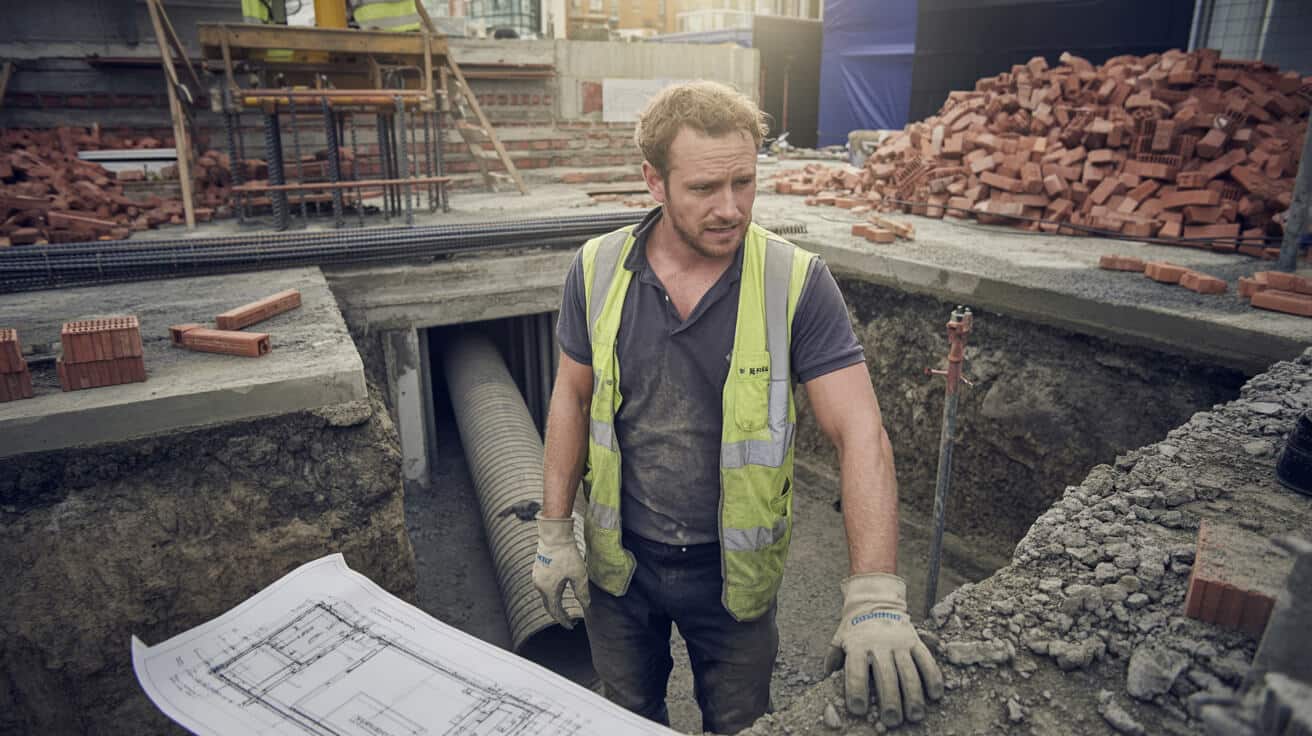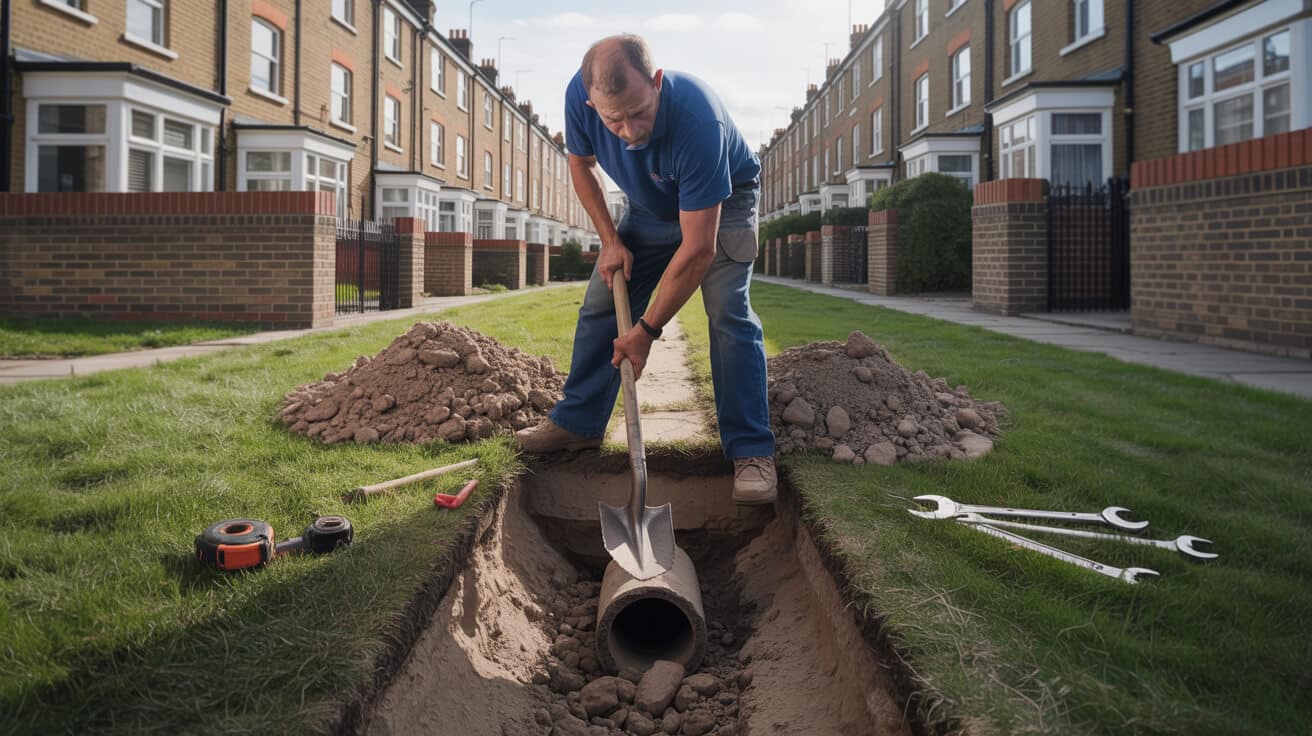 Part L & The Future Homes Standard Key Changes Explained
Part L & The Future Homes Standard Key Changes Explained

Why Are Part L and the Future Homes Standard Raising the Bar for Every Property Owner?
UK property compliance has shifted from a technicality to a central factor in safeguarding your investment, protecting your income, and even securing your peace of mind as an owner, landlord, agent, or authority. Part L and the Future Homes Standard aren’t just legislative hurdles—they’re now the gatekeepers to property value, market access, and a headache-free future for anyone responsible for a physical asset.
Miss a certificate today—lose out on value, buyers, or grants tomorrow.
This isn’t merely about satisfying the building control officer during a final inspection. Since 2022, Part L enforces a rigorous framework for energy efficiency: U-values, system accreditation, airtightness proof, and documented carbon reduction all locked in from blueprint to handover (gov.uk). The Future Homes Standard, looming from 2025, takes this even further.
Your compliance storey now begins before a single fitting is purchased. You’re not just “ticking the boxes”—your job is to prove, with evidence, that your property stands up to scrutiny on carbon, insulation, EPC rating, and low-carbon technology. Failing to meet this threshold is now financially punishing: delays, frozen sales, invalid insurance, even an outright bar to letting or grant eligibility.
Your home is now under the same legal expectations as any major part of national infrastructure—right down to the last light switch or foam baton of insulation. That’s the level of rigour distinguishing an asset you can leverage from one you cannot.
Why is the urgency so acute for everyone from private landlords to large property managers?
- Buyers, lenders, surveyors, and councils are demanding paperwork that stands up to legal and technical review.
- Grant streams and insurance underwriters require proof before funds release or cover renewals.
- Local authorities face compliance audits that affect housing allocations, grant schemes, and public reputation.
Part L and the Future Homes Standard represent the dividing line between properties that keep pace with a decarbonising world and those left stranded by outdated standards.
You only get one chance to pass at each stage—delay isn’t just about money, it’s about long-term access and reputation.
Which Home Improvements and Building Works Trigger These New Standards?

There’s a stubborn myth that Part L and the Future Homes Standard only apply to major housing developments. That myth routinely derails small projects, triggers expensive correction works, and wrecks timelines as surveyors or building control step in at the eleventh hour. The reality is: almost any meaningful upgrade, extension, or renovation can trigger these compliance thresholds—and they’re now enforced without exceptions, regardless of project size.
A single wall replacement or new heated extension can put your project directly in regulation territory.
What gets pulled into the net?
- New builds (domestic or residential conversion): Any creation of a new dwelling, be it from scratch or through converting existing premises (e.g., shop to flat).
- Heated extensions: As soon as a radiator, underfloor loop, or electric heater is planned for an extension, it’s in scope—especially where new glazing is fitted.
- Thermal upgrades: Replacing or adding insulation to 25% or more of a “thermal element” (wall, roof, or floor)—even if it’s just two walls in a loft or overboarding a kitchen floor.
- Major heating or hot water changes: New boilers, cylinders, or the switch-over to a heat pump or hybrid trigger new documentation demands.
- Full refurbishments: Projects that strip rooms back to brick, remodel kitchens, or change layouts will almost always cross compliance boundaries.
Here’s a table summarising common project types and compliance triggers:
| Project Type | Compliance Trigger | Must Evidence |
|---|---|---|
| New Build | Always | Full Part L, SAP/EPC |
| Heated Extension | Yes if fixed heating system added | U-values, pressure test |
| Thermal Upgrade ≥25% | Yes | Insulation, U-value |
| Boiler/Heating Swap | Yes (in most cases) | System certification |
| Full Refurb/Back to Brick | Yes | All of the above |
Even straightforward household jobs—like overboarding a loft or re-doing exterior wall insulation—can turn out to hit the 25% rule, flipping what seemed like a quick repair into a full-scope, paperwork-heavy process. It’s poor awareness here—not absence of effort—that cost owners value, time, or legal signoff.
Surveyors and control officers are now compelled to withhold final approval, EPC release, or grant funding the moment documentation is missing or partial. Small missteps—work not recorded, a missing certificate, or neglecting a U-value calculation—can freeze your build, sideline future insurance, or cut you off from incentive money.
Whatever kind of asset you manage—home, rental, block, or business—your assumption should now be: “If I’m doing anything more than decorating, I need to plan and prove compliance from day one.” Anything less is tempting fate.
What felt like ‘routine repairs’ five years ago now require audit trails, not just old-fashioned trust.
What Standards Must You Meet—And Why Is “Proof” Now Mandatory?

The compliance landscape has moved from “looks good, must be compliant” to “don’t show the proof, don’t pass the test.” Every claim about thermal performance, air tightness, or low-carbon readiness has to be documented and digitally captured, right down to individual stages and materials.
Claiming compliance won’t cut it—auditable proof is what building control, lenders, and buyers demand.
The current standards aren’t suggestions—they’re technical minima.
- Walls: U-value at or below 0.18 W/m²K
- Roofs: U-value at or below 0.11 W/m²K
- Floors: U-value at or below 0.13 W/m²K (*varies by property type/location*)
- Windows: U-value at or below 1.2 W/m²K (*frame + glass*)
- Air tightness: <5m³/h/m² @ 50 Pascals for new dwellings, with documentation of pressure test
Hot water and heating standards:
- All new systems must be “low-carbon ready,” which increasingly means heat pumps, or at the very least, smart-zoned controls documented down to wiring photos, serials, and commissioning logs.
- Commissioning reports, installer credentials (G3 for unvented, WaterSafe for water), and manufacturer certs are mandatory.
Without proof:
- Signoff is denied. That means no occupancy, no grant payout, and a property that can’t be sold, remortgaged, or rented legally.
- Lenders, insurers, and grant agencies are tightening requirements for EPCs and supporting evidence *(see gov.uk)*.
Winning strategies for owners and project managers:
- Focus on “fabric first”: Insulation, airtightness, and draught reduction need to be locked in before even thinking of flashy tech. That’s where most failures or expensive “re-works” originate.
- Make compliance tangible: Build up a living, digital project file with time-stamped photos, paper trails (U-value certificates, SAP/EPC), and every installer signoff, so you’re always a step ahead.
- Demand signoff at every stage: Split projects into verifiable milestones—don’t risk a great job being undermined by skipped documentation at the finish line.
Proof isn’t a formality; it’s a non-negotiable. Every project is now, by default, a compliance project with the burden of proof on the owner.
The real threat to your project isn’t quality—it’s forgotten paperwork. Capture as you go, or run out of options at the eleventh hour.
What’s Behind the Gas Boiler Ban, and What Will Replace It in Tomorrow’s Homes?

If you manage, invest in, or simply own a property, you’re on the front line of one of the UK’s most significant housing transitions: the move away from gas boilers. While older systems aren’t being forcibly ripped out, the writing is on the wall for gas heating in all new homes and most significant upgrades from 2025 onwards. The Future Homes Standard will see to that.
Future compliance is now built in at the system level, not tacked on as an upgrade.
Here’s the landscape:
- No new gas boilers in homes built or converted after 2025.:
- Heat pumps: (air source, ground source) are becoming the default—quiet, efficient, and fully compliant.
- Heat networks: (shared communal or district heating) for larger developments.
- High-efficiency electric heating: as the fallback for off-grid or small space conversions.
For any significant heating or hot water system replacement now, you need to prove low-carbon compatibility:
| New System Type | Example | Key Documentation Required |
|---|---|---|
| Heat Pump (ASHP/GSHP) | Grant-funded ASHP unit | Installer G3/WRAS, Certs, Photos |
| District Heat Network | Multi-flat system | Scheme certification, SAP update |
| Electric Panel | Small conversion/off-grid | EPC update, Safe-Electrical-Cert |
It’s not enough to instal—you must document, photo, and commission each heating upgrade for your compliance file.
This isn’t just about future legislation. Grant bodies, mortgage lenders, and energy performance audits are already requiring documented pathways to net zero (ft.com). Fail here and you’re pricing your asset out of the future market.
Don’t assume the “invisible hand” of compliance will catch mistakes at the last minute. Whether you’re a homeowner, portfolio landlord, or managing a block, spec for the future and evidence every step.
What held value in 2021 (a new gas boiler) can become stranded cost by 2025. Make upgrades serve you now and later.
What Does “Fabric First” Demand in Practice—And Where Do Projects Fail?

“Fabric first” isn’t a buzzword; it’s now the foundation of energy law. Even gold-plated tech can’t fix bad insulation, cold bridges, or draughty seams. You are now accountable for physical performance as measured by tests, not design intent or spec sheets.
One hidden air gap, missed taping around a window, or weak insulation spec can tank your test results—and your signoff.
What does real-world fabric-first compliance demand?
- *Continuous insulation:* Every joint, edge, and penetration sealed—the mantra is “no breaks, no gaps.”
- *Airtightness barriers:* Properly taped, correct membranes, and attention to tub/pipe/cable penetrations.
- *Certified products only:* WRAS, BS/EN, or equivalent on everything—expanding foam from the local shed doesn’t qualify if it lacks certification.
- *Commissioned testing:* Air pressure and leakage tests scheduled at shell stage—not as an afterthought.
Where do most trip up?
- Junction details: Corners, floor-to-wall, beam penetrations where hasty work leads to cold bridging or leaks.
- Trade handovers: One trade covers up another’s missed detail: insulation left out behind boxing, joints untaped before lining, membranes cut through for quick fixings.
- Specification confusion: Cheap parts or out-of-date gear slips past and undermines performance (especially with windows, doors, or flat roofs).
The cost of failing a pressure or fabric test can be eye-watering. Rectification invariably means ripping out completed work—not just a few quick patches—and can set timelines back weeks. Organised owners practice “evidence capture” as they go: photos, receipts, labels, test sheets—each step recorded, checked, and handed over with zero drama.
Proper fabric compliance is the foundation for future upgrades, lower bills, and a property that grows, not loses, value in a tightening market.
Where Do Most Owners and Contractors Trip Up on Compliance?

No one starts a project aiming to fail compliance. But all too many get derailed by unclear roles, deleted emails, vague paperwork, or not realising just how early in a build you need to document every standard. Right now, the number one cause of lost value, delays, and close-call legal battles is missing evidence—not defective work.
Jobs stall or fail most often when paperwork—not the build quality—falls short.
Top compliance pitfalls:
- Flow of credentials: Using an installer who isn’t G3, WaterSafe, WRAS, or properly accredited—and not checking the paperwork up front.
- Evidencing the invisible: Failing to photograph and sign off insulation, membranes, or window/door fit before they’re boxed in.
- Testing at the wrong stage: Leaving air or pressure tests as a late formality rather than a planned milestone—leading to expensive tear-outs.
- SAP/EPC data drift: Upgrades or fix swaps mid-project not recorded, leaving your build out of sync with assessed data.
- Paying before proof: Settling bills before receiving a digital “job file” with sign-off, commissioning, and warranty evidence.
For landlords, a missing compliance file can shut down your ability to let. For commercial managers, it can risk insurance rejection or project halts. Private homeowners may discover that without complete documentation, future sales freeze, refinancing stalls, and grant help evaporates.
How do high-performance asset owners avoid the trap?
- *Work only with proof-ready teams*—no “just trust us.”
- *Demand documentation as you go*, not at the end—each trade, each stage.
- *Clarify responsibility in writing*—don’t be left between the builder and the building officer.
If there’s one sure sign of a professional: they record every step as if they’re building for their own family. Anything less risks everything later.
What Documentation Secures Your Project—and Who Challenges It?

Your property’s compliance file is now as vital as its ownership papers. The difference between a compliant and a stalled—or even unsaleable—project often comes down to the thoroughness and digital accessibility of your documentation.
Minimum evidence standards now include:
- Photo file: Dated, geo-tagged photos at each milestone—insulation before and after enclosure, air barriers, heating plant, windows and doors installed.
- SAP and EPC: Accredited assessor outputs to show total emissions, system types, and performance.
- Test certificates: Airtightness, pressure and commissioning tests, each passed and signed.
- Installer qualifications: Up-to-date G3, WaterSafe, WRAS, manufacturer training tickets and CPD.
- Material/product labels: Insulation, window units, heating plant—certification and serials snapped and filed.
- Warranty and aftercare: Signed-off logs, aftercare guides, and explicit transfer of warranty documents.
| Document Type | Required For | Who May Challenge/Request |
|---|---|---|
| Photos (build stages) | All regulated projects | Building officer, lender, grant |
| SAP/EPC reports | Any major upgrade/newbuild | Surveyor, buyer, insurer |
| Installer credentials | Heating, plumbing, renewables | Control, grant authority |
| Air/pressure test certs | Newbuilds/extensions | Building control, warranty |
| Warranty docs | All key systems | Owner, insurance, buyer |
Treat your compliance folder as an asset on par with planning permission—don’t risk grant, sale, or let on a missing signature.
Failing at documentation is not just a “paperwork” issue; it can shrink property value, erase access to grants, and create long-term legal exposure if systems or insulation are later implicated in regulatory reviews.
Who checks your compliance?
- Local building control officers (all completion certificates, signoff)
- EPC/SAP assessors at instruction or sale/remortgage
- Landlord authorities, accreditation schemes, letting agents
- Buyers’ solicitors and lenders at every transaction
- Warranty providers on claim
- Grant agencies prior to and after funding
A digital, portable compliance file is now the new “passport” for your property—build it as you build or refurbish, and keep it current.
Why the Installer’s Accreditation—and Plumbers 4U’s Process—Mean Compliance Is a Sure Thing

The entire value chain in compliance is only as strong as the installer’s integrity, qualifications, and paperwork discipline. The era of the “off-the-books” plumber or post-handover documentation scramble is gone. If your installation team cuts corners on paperwork, you’re gambling not just with compliance but with the future marketability and security of your asset.
Certified workmanship, systemized record-keeping, and compliance handover all come as standard—no upcharge, no excuses.
Plumbers 4U turns mandatory compliance into a frictionless, trusted experience:
- All engineers and fitters hold verifiable credentials: WRAS, G3, WaterSafe, Benchmark, with ongoing CPD and compliance checks.
- Each project, from a single boiler swap to a deep retrofit, receives photo-filed documentation—insulation, smart controls, heating plant, everything signed, serial-numbered, and geo-tagged.
- We commission everything: Pressure tests, air tests, SAP/EPC paperwork—not just “if you ask,” but as an expected part of the job.
- If a system doesn’t hit compliance? We resolve, retest, and stand behind every fix, labour included.
- On final handover, you receive a digital project file: certificates, SAP/EPC, test sheets, warranty logs, and maintenance schedule.
Choosing anyone else exposes you to:
- Unqualified labour = instant compliance risk, failed grants, delayed payback.
- Lost or incomplete documentation = signoff delays, market obstacles.
- Patchwork aftercare = future costs, failed warranty claims, and re-inspect fees.
That’s the Plumbers 4U difference: Full transparency at every stage, documented protection for future upgrades, refinancing, or grants, and a compliance posture that makes your asset stand out rather than flag risk.
The strongest value signal you can send as an owner or manager isn’t the gear in your plant room—it’s the credibility of a compliance file built by professionals who expect to pass every audit, every time.
Book a Fully Accredited Part L or Future Homes Standard Service with Plumbers 4U Today
Compliance headaches, last-minute panics, and failed inspections are avoidable. With Plumbers 4U on your side, every step—from first quote to final signoff—is managed to the letter of the regulations, and documented so you never lose a moment’s value.
What do you get with us?
- A pre-planning compliance review: We walk you through exactly which rules grip your project—no surprises on Day 30.
- Clear, jargon-cutting recommendations: Every insulation, heating, or system spec is validated for compliance and future grants.
- Accredited installation by professionals: Our engineers’ credentials beat the audit—G3, WRAS, WaterSafe, Part L, always up to date.
- Live, as-you-go evidence capture: No more documentation scramble; we assemble and share your compliance folder plank by plank.
- First-time pass guarantee: We resolve, retest, and handover every project with paperwork and peace of mind in one package.
- Lifetime aftercare and reminders: Your warranties, benchmarks, and grant windows are tracked so you never miss another deadline or opportunity.
Don’t get sidelined by the new rules—lead with a proven compliance partner:
Book your walkthrough or consult today—every question answered, every stage documented, every test passed. Plumbers 4U: Compliance made simple, value secured.
Frequently Asked Questions
Who is legally responsible for Part L and Future Homes Standard compliance, and how do deadline rules impact each stakeholder?
Anyone shaping a building’s energy performance—homeowner, landlord, property or asset manager, contractor, or developer—must now meet exacting Part L and Future Homes Standard requirements. The days of “minor refurb exemption” are firmly over: replace 25% or more of a wall, upgrade a communal heating plant, swap out most windows, or even insulate an attic, and you trigger the bar for full compliance. Those holding off until “closer to 2025” miss a harsh deadline: new residential builds must ditch gas boilers entirely and demonstrate net-zero readiness, while commercial and rental portfolios face stepped enforcement from EPC relets to refinancing. Failure to meet these timepoints doesn’t just delay completion—it locks assets out of grants, restricts resale, and lands non-compliance fines that can escalate with repeat offences.
Every improvement now carries signature-level accountability—what you fix today echoes across audits, insurance, and resale.
What roles carry oversight, and when does legal accountability start?
- Homeowners: Legally responsible for upgrades, with personal liability for retrofit compliance (especially insulation and heating).
- Landlords and property managers: Duty to provide evidence at letting or renewal; EPC minimums plus digital audit trails.
- Developers and contractors: Must design and deliver to the latest standard—missed documentation equals failed sign-off or legal defects.
- Commercial asset owners: Commercial landlords answer for communal plant and envelope upgrades—trigger full SAP/EPC review and future grant eligibility.
Which deadlines and triggers apply to different project types?
| Scenario | Compliance Trigger Point | Deadline or Enforcement Window |
|---|---|---|
| New home/large extension (England/Wales) | FHS + Part L | Building Control sign-off (2023/2025 cut-off) |
| Heating plant/major insulation retrofit | Full compliance | Immediate (upon >25% change) |
| Portfolio relets (landlord/block manager) | EPC/SAP digital proof | With every new tenancy post-2025 |
| Window or façade upgrade | U-value plus airtight test | Now for major scope, rolling for minor |
By 2025, the compliance landscape switches from self-certification to digital-by-default—smart trades are future-proofing now.
What inspection evidence and digital documentation satisfy current Part L and FHS audits?
Digital documentation has overtaken paper as the critical pass/fail axis on every project. Passing a Building Control or lender audit now relies on your ability to present a one-stop, time-sequenced digital file. This means captured batch numbers, installer certifications, pressure test logs, staged photographs, and “as-built” SAP/EPC assessments. The gap between what’s actually installed and what’s provable is where most projects fail; a missing or out-of-date certificate can cause lenders and grant-makers to delay or withhold funds—regardless of how good your insulation or boiler really is.
A system hastily closed up without documentation stalls deals, rebates, and grant disbursement—digital proof is your asset’s best defence.
Which proof steps are commonly missed—and what’s required for secure sign-off?
- Staged photographic evidence: Each layer, from insulation to windows to plant, must have a timestamped image before being hidden.
- Installer badges and handover documents: Everything from G3, WRAS, and WaterSafe sign-off to digital logs and label photographs.
- Accredited calculations: U-value and EPC/SAP report, generated by an approved third party, now needed for funding and sign-off.
- On-time pressure testing: Carried out before closure of works, not after the finish; repeated tests incur extra cost.
Proof building: key steps and verification logic
| Task/Upgrade | Required Evidence | What Failure Means |
|---|---|---|
| Loft or wall insulation | Dated instal photo + batch details | Fails EPC/SAP, grant denied |
| Window/door replacements | Photo + U-value + SAP | Sale, letting, or refi blocked |
| Heating or hot water upgrade | G3/WRAS/WaterSafe badge + log | Warranty void, insurance issues |
| Airtightness requirement | Digital pressure test before finish | Funding lost or delayed rework |
A job’s real value comes not from what’s buried behind the wall, but from what you can readily demonstrate during the inevitable audit.
How do current heating and water system requirements affect upgrade choices—and what does “zero-carbon ready” mean in practice?
For residential and mixed-use assets, the march toward “zero-carbon ready” is not a slogan—it’s law. Gas boilers are now phased out of new installations; heat pumps, approved electric systems, and occasionally district heating are the new benchmarks. Landlords and property owners need more than headline efficiency—they need accredited systems, measured and evidenced via every step, or risk the asset being “stranded” for resale and finance. From 2025, even missed smart controls or incomplete zone documentation can be flagged as failures. Expect to demonstrate:
- G3, WRAS, WaterSafe certification: No badge, no sign-off; applies to every main water connection and unvented cylinder.
- Photo evidence of manufacturer badges/serials: Grants, relets, and warranty cover all depend on digital evidence.
- Commissioning logs and smart commissioning: Uploadable handover packs, filled and verified on the day (not weeks later).
Selecting the right system without the right paperwork removes nearly all asset upside; compliance makes or breaks your building’s future.
How do these requirements shift the upgrade process for asset owners and managers?
- Grant eligibility: Only fully documented, digitally traceable upgrades unlock state funds and lender deals.
- Smart control and zoning logic: Not just for comfort; zoning, load/temperature control, and remote monitoring are now regulatory line items.
- Manufacturer and installer collaboration: Both badges are checked on the file, and both can block a transaction if missing or incomplete.
A missing commissioning log means “last year’s best kit” can turn into next year’s most expensive asset misfire.
Where do compliance checks and sign-off processes commonly break down, and how can failures be prevented up front?
Most compliance failures are not the result of poor installation but of scattered or missing evidence. The “25% trigger” catches out project teams: expand a kitchen or swap more than a quarter of your glazing and suddenly the work demands a full compliance file. More than 45% of failed sign-offs are traced to one of three causes: missed photo/document milestones, lack of staged testing, or unqualified trades carrying out covered work. Modern asset buyers, surveyors, and auditors all demand a one-click, timestamped audit history. Trust is undermined instantly by evidence gaps—no exceptions for small jobs or “sorted by the mate’s mate” approaches.
Compliance is lost not in the complexity of standards, but in forgetting to log the simple steps that auditors expect and trace.
What are the most frequent compliance tripwires?
- Unlogged stages: Insulation or plant boxed in before snapping a photo or logging serials.
- Skipped or late pre-close tests: Pressure and airtightness checks done after the finish—costly, legally shaky, and often a fail.
- Missing credentials: WRAS, WaterSafe, or G3 evidence not filed—legally required for everything from cylinder instals to smart system upgrades.
- Fragmented or paper-based evidence: Photographs and logs on multiple devices or emails, lacking digital centralization.
How to build a bulletproof compliance log
- Adopt app-based, cloud-shared compliance logs: Accessible at all times, easy to send to sales, lending, or audit teams.
- Book staged testing as part of the timeline: Reserve slots before closure dates; don’t wait to see if you “need” them.
- Partner exclusively with fully certified trades: Only trades with current credentials should touch regulated upgrades.
Proactively assembling the compliance file as you go, not as an afterthought, converts a headache into asset security and stakeholder trust.
Which digital documents and photographic records are valued most by buyers, lenders, and grant authorities?
In today’s regulatory and financial environment, documentation is value. Buyers may be ready to walk and lenders to reject if a project file is weak. Sale price, equity release, or even letting permissions depend on every milestone being easily auditable. The most valuable records are:
- Dated progress photos: Each layer, uploadable for immediate remote audit.
- SAP/EPC/U-value sheets: Stamped and issued digitally for instant lender, grant, or insurance use.
- Installer, manufacturer, and commissioning logs: Linked to serial numbers and stored for all future recertification.
- Pressure and air test logs: Ideally time-sequenced and cloud-accessible, to prevent disputes and audit snags.
- Warranty, aftercare & grant scheduling: Synced with compliance logs so service reminders drive ongoing eligibility.
| File Type | Who Demands It | Failure Penalty |
|---|---|---|
| Progressive photo log | Buyers, lenders, councils | Approval, resale, and grant delay |
| SAP/EPC/U-value proof | All funders/auditors | Mortgage or grant turn-down |
| Credentialed logbooks | Insurers, warranty teams | Cover withdrawn, “void” status |
| Pressure/air test certificate | Lenders, Building Control | Forced rework, enforcement action |
| Servicing/aftercare record | Asset managers, tenants | Missed future grant, rent bar |
A missing file risks lost value far in excess of any construction shortcut—documentation is the real currency of future-ready asset management.
What proactive advantages does working with Plumbers 4U deliver for compliance, grant-readiness, and asset security?
Plumbers 4U sets the compliance gold standard for stakeholders—delivering full documentation, audit-ready traceability, and engineered peace of mind at every phase. Clients gain:
- Every engineer, fully accredited: WRAS, G3, WaterSafe status—evidence surfaced from day one, never an afterthought.
- Milestone-by-milestone digital proof: Photos and critical logs filed automatically as the job progresses, so you’re always ready for audit, insurance, or sale.
- Remediation and rapid retest included: If a single proof or credential fails, the fix is free—”first-time right,” every time.
- Asset-ready dossier at handover: One digital handover file for your lender, buyer, council, or letting agent—enables instant approvals and unlocks new grant access.
- Ongoing grant and aftercare support: Service schedules and reminders keep your compliance evergreen, and your property aligned with ever-evolving standards and subsidy windows.
We underwrite your asset’s compliance so you can focus on value—every badge, every photo, every log, centrally filed for peace of mind.
Partnering with Plumbers 4U means you’re never left scrambling for evidence or defending a retrofit after the fact. Book a digital compliance review or site walk now—so your portfolio is always ready, your grants are always accessible, and your sale or refinance moves at your pace, not the auditor’s.



